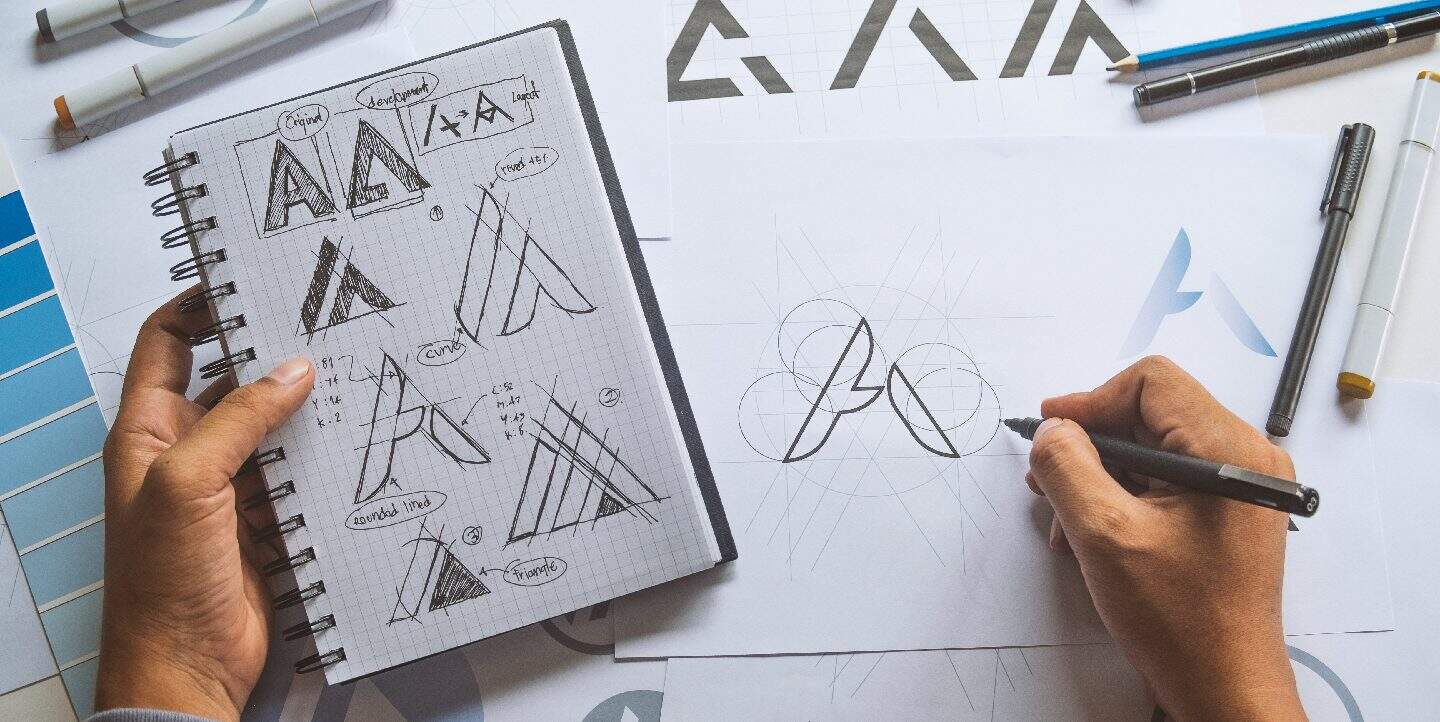
Great Process. Great Design.
Having a great process when designing is important to produce great work. You will have a smoother path from the beginning to the end. Everybody’s process is different, but there are some key points that you should remember: Research, brainstorm, creating a mood board, sketch, putting your design ideas into the computer, and refine.
Research
Researching before you jump into your design is important because it will provide you with an arsenal of inspiration and information to pull from for your designs. The more inspiration you have to pull from, the better. Your research process could be gathering images or written information. Putting together a visual library will help you get started. Some good places to look are designspiration.net and Pinterest. Designspiration.net has a wealth of images and designs from professionals to students of design in almost any subject you are looking for. Pinterest is great for keeping track of what is trending. Even using Google to find images works just as well. This is for you to help you in your process. You might learn something in your research and it may help you in another project or design in the future.
Brainstorm
This is when you take all the information you’ve gathered. You can make word webs or lists of keywords to get some general ideas out. This can help you think outside the box. See where your word web will take you. Brainstorming should be done quickly. Don’t dwell on something for so long and talk yourself out of an idea. At this point, no idea is a bad idea and you’re going more for quantity than quality. If you find yourself hitting a block go for a walk or take a break and clear your mind. Don’t feel pressured at this stage. After you’ve finished your idea generation talk it over with someone and see if they have any additional ideas to add to what you already have.
Mood Boards
Mood boards are helpful in that you can create a visual feeling and make sure you are on the same page as the person you are designing for. A mood board is a collection of images and typography to establish a feeling for your design. It can be structured into a grid or expressive. These boards can be made by hand using found materials or made digitally. Whatever way works best for you. There is no wrong way to put together a mood board if it is conveying a mood. You can reference your mood board throughout your process to make sure you are keeping on track. Making more than one with different moods can help you narrow down what direction you would like to go in.
Sketching
Sketching is important in design. This is a visual way to get your ideas out. At this point, it’s helpful to get out the good, the bad, and the okay at best. I find that if I can get my cliché ideas out of the way first I can move on to more creative ones. Just like with brainstorming you are going for rapid ideation and quantity over quality. You’ll worry about quality later in the process. I also prefer to do a lot of sketching or thumbnail sketches, which are ideas sketched out roughly. They don’t have to be finished, just enough to get the idea across. Don’t be afraid to draw from your brainstorms and research. Use different materials, such as pens, pencils, markers, even crayons. These may help to generate unique ideas and styles.
Computer
Putting your ideas into the computer is where you really start to see your ideas come alive. Take your best ideas and digitize them. Here they will begin to take shape into something more substantial. Sometimes what you think looks good on paper doesn’t quite work on the screen. That’s okay. You can try one of your other ideas. Something to keep in mind is that the design process isn’t always a straight path, sometimes you have to take a step back to get the most of your designs. When working on the computer, I find that working with several different unique designs and working on them helps to create variety to choose from.
Options
If you are designing for someone they are going to like options. Also, this is where you can push your designs. Don’t be afraid to break them and try something different. As long as you are saving copies you can always go back. Take risks. If you are working in Adobe Illustrator, you can create multiple artboards to test out your variations and in Adobe InDesign you can create new pages. Don’t be afraid to ask for feedback, especially if you can find people who are in your intended audience for the piece. This will help you create a better design.
Criticism
Criticism doesn’t have to be a bad thing. You also have to use your best judgment for what is a good critique and a not so good critique. If you are designing for print, print it out and mark it up. Your colors will be darker on paper and you can catch little things that just don’t look right. A computer screen is lit from the back making everything brighter and more vibrant.
Once a single design has been decided upon, you can make revisions and refine it. Really nitpick. You want your design to communicate clearly and concisely. This is when you will finalize your design and present it.
These key points will help you stay on track on your designing journey and make it a smooth process from beginning to end. Remember to research, brainstorm, create a mood board, sketch, put your ideas on the computer, and refine. Don’t be afraid to take risks. The most important part of the process is to have fun with your designs.
Have any questions about designs or marketing? Contact us here.
